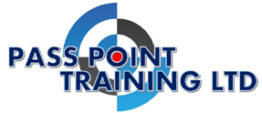COVID-19 Coronavirus
Pass Point Training Ltd
continue to keep up to date with UK Government Guidelines and UK Resuscitation Council advice to enable us to provide safe training, in your workplace.
ALL TRAINING
Instructor led training is available, and whilst we continue with our COVID safe procedures, we request that you consider everyone else attending the course, as well as our trainers.
If you are feeling unwell, please refrain from attending training courses where there are people in which you do not usually come into contact with.
BLENDED LEARNING / E-LEARNING
Our e-learning portal allows for an admin account to distribute the learners individual licences, whilst monitoring the progress of all delegates.
On completion, both the learners and admin, are able to print a copy of the successful delegate's certificates.
Where it is a practical course (e.g. First Aid, Manual Handling, Fire Extinguisher use etc.), a blended learning course includes the e-learning theory online and a practical session with one of our trainers, thus reducing time in the classroom.
Please contact us if you have any other queries.
Continue to:
- Wash your hands with soap and water often - do this for at least 20 seconds
- Use hand sanitiser gel if soap and water are not available
- Exercise regularly e.g. walk, run, cycle
- Check on vulnerable people in your area.
Stay Safe
